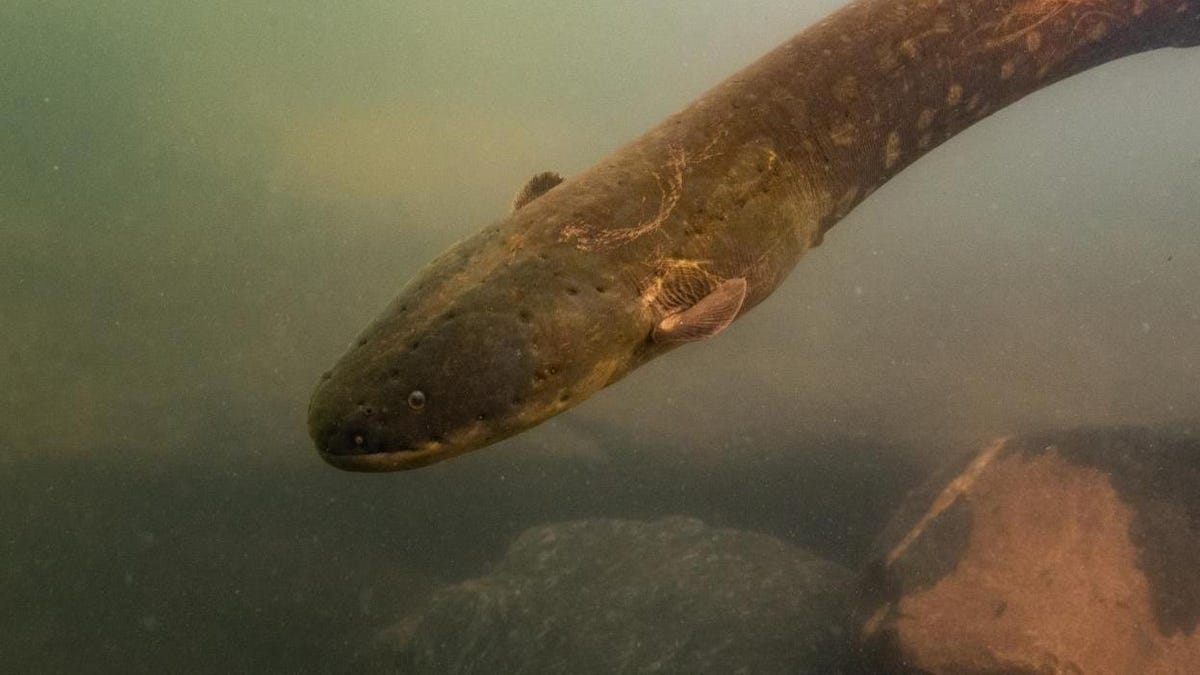Scientists make 'extraordinary' find of electric eels hunting in packs
"Nothing like this has ever been documented in electric eels."
Wolves. Dolphins. Hyenas. Humans. Killer whales. And now electric eels? Researchers studying the slinky anguilliformes observed an unexpected (shall we say shocking?) behavior when they noticed the fish hunting in groups along the Iriri River in the Amazon basin of Brazil.
This shows a group of electric eels in the process of hunting tetra fish.
Scientists had thought the fish (they're not true eels) preferred to keep to themselves until they witnessed the electric eels forming cooperative hunting parties with up to 10 individuals. The fish herded tetras (a type of small fish) into a ball in shallow waters, shocked them and then feasted on the stunned prey.
"This is an extraordinary discovery. Nothing like this has ever been documented in electric eels," said Smithsonian National Museum of Natural History fish research associate C. David de Santana, leader of a research team that documented the eels, in a statement on Thursday.
These aren't just any electric eel. They're Volta's electric eel (Electrophorus voltai), a species that was described only recently. It can grow as long as 8 feet (2.4 meters) and produce 860-volt electric shocks, "the strongest electric discharge of any animal on Earth."
According to de Santana, 10 of these eels discharging at the same time would produce enough electricity to power 100 light bulbs.
The team published a paper on the eels in the journal Ecology and Evolution on Thursday. It's the culmination of years of research that included multiple observations and an expedition where lead author Douglas Bastos with Brazil's Instituto Nacional de Pesquisas da Amazônia (INPA) found over 100 adult electric eels in a lake connected to the Iriri River.
"Our initial hypothesis is that this is a relatively rare event that occurs only in places with lots of prey and enough shelter for large numbers of adult eels," said de Santana.
The researchers plan to return to the scene of the dine in order to collect tissue samples, place radio tags on some of the electric eels and measure the electrical discharges of the groups. They hope to learn more about how the animals communicate and organize their hunts.
The team also plans to collect some of the electric eels in order to observe their group dynamics in captivity. There are a lot of mysteries yet to solve. Said de Santana, "This paper is an example of how much we still don't know, how many organisms whose life histories we don't yet understand."


